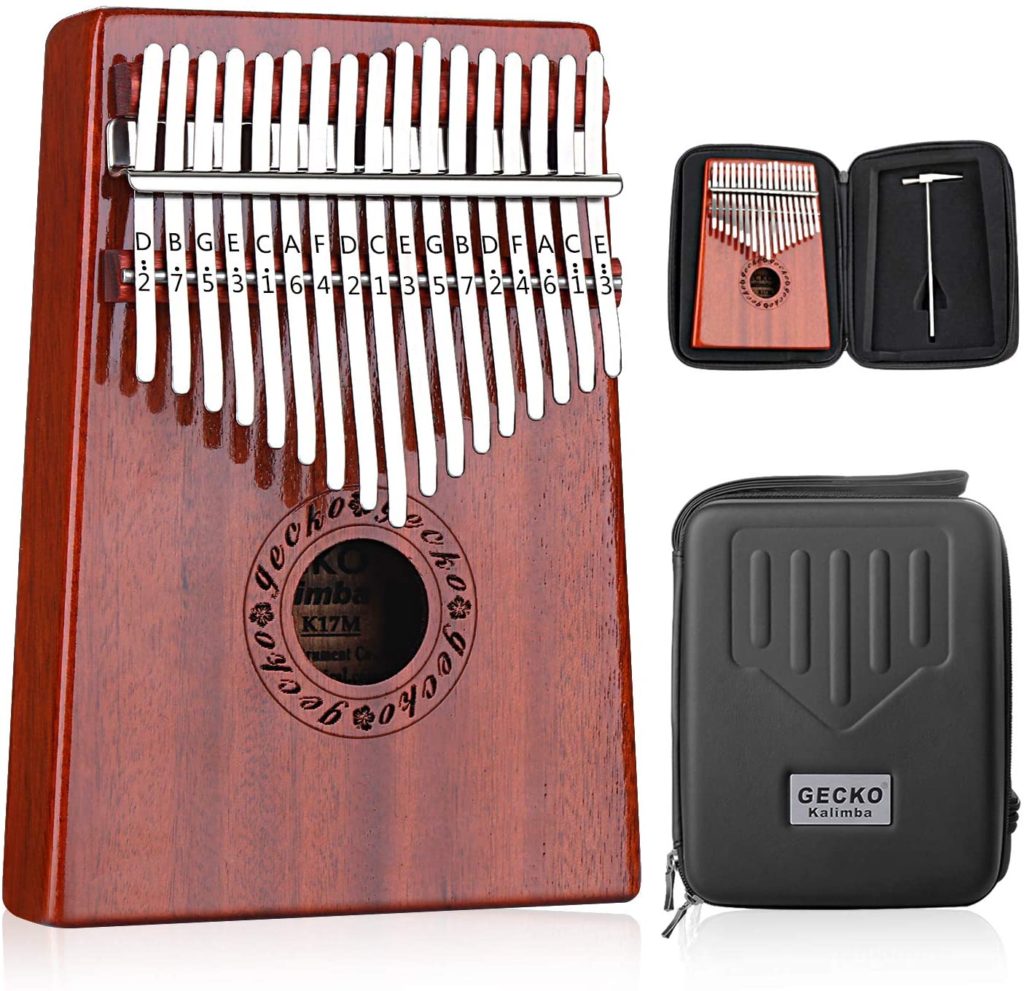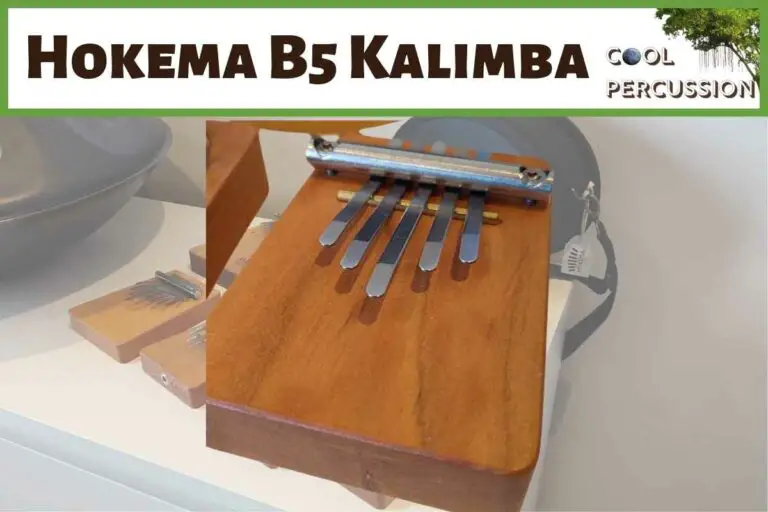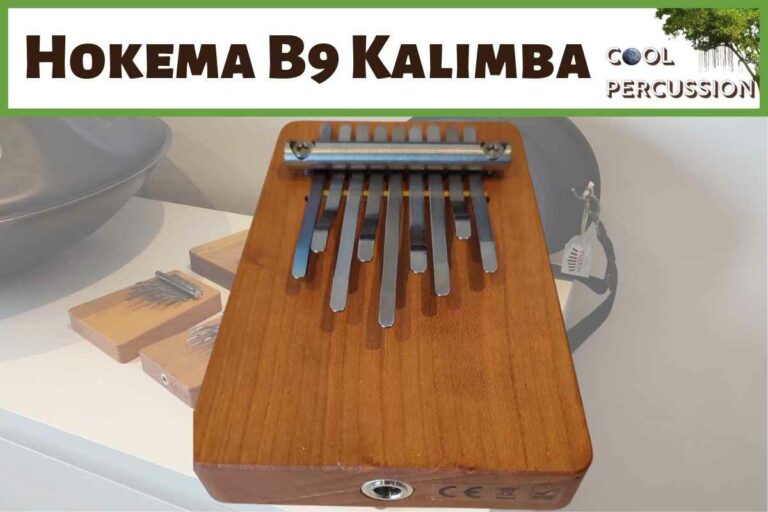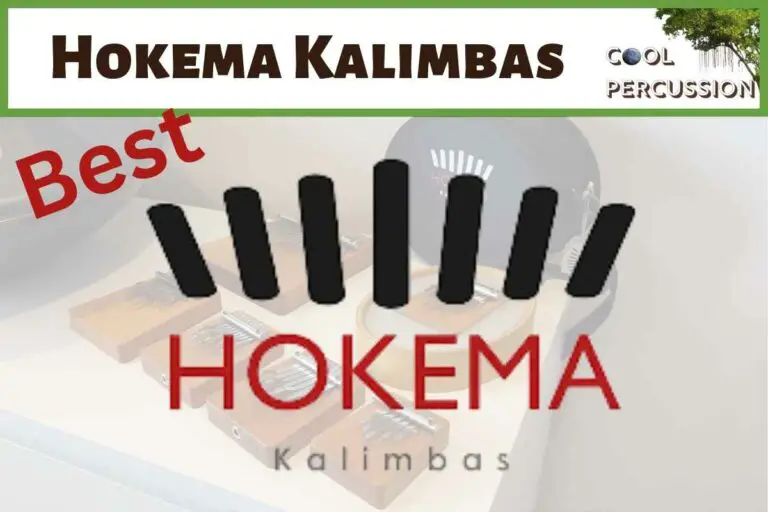Why Kalimba is Both Easy and Fun to Learn
Of all the instruments in the world the Kalimba is probably one of the few that brings easy pleasure to both the player and the listeners even when you’re learning to play. Popular for the relaxed sounds the instrument can make and the simplicity of the design, the instrument that hails from Africa has long been a good starting point for those looking into starting their instrumental career. But is Kalimba easy to learn?
The Kalimba is easy to learn with only ten notes that can be played, slightly altered by the vibrato hole, making it easy to understand and learn within a few minutes. What makes the instrument so much more fun is the range that can be reached on the way to mastering the instrument, with soft sounds and pleasing tunes the Kalimba is a favourite among beginners.
However, there are still many things that you will have to learn before making the purchase of your first Kalimba. Add in that you may not know which Kalimba is the best, or that you could end up buying a more complex one by accident, there are many things that will end up happening once you get yours as well.
Knowing what to do, how to do it, and when to do what with your Kalimba is important to learning it properly.
What is the best Kalimba for beginners?

There are many styles of Kalimba’s out there with some having many more notes to play than just the standard ten. These will confuse you and make it harder for you to learn how to play the instrument, further, there are some versions without vibrato holes and others with several of them.
All of this is just a giant headache, so here’s what to look for when you make your first Kalimba purchase.
- Notes: Each note on a Kalimba is the small metal tong that sticks out of it, you almost flick these to produce a sound. A Kalimba that is perfect for beginners should only have 10 of these, allowing you to use the basic learning materials available on the internet to learn the instrument.
- Vibrato Holes: Typically you only need one as a beginner to learn how to play the instrument, closing or opening the hole with your fingers as you play, producing many varied sounds or just dulling the sounds int total.
- Size: The Kalimba you buy for your first time should not be too large, but also not too small. Kalimbas are typically small enough toe fit in both your hands with ease, allowing your unused fingers to wrap around the base of the instrument.
- Wood: Because this is your first Kalimba, don’t go for the fanciest wood grain Kalimba you can find. Instead try to get a Kalimba with a good but not perfect wood grain, allowing you the ability to be a bit careless with the instrument. You can then easily take the time to learn what to do and what not to do with the Kalimba before investing in one that is much more expensive.
My Favourite Kalimbas for Beginners
I own quite a few Kalimbas of differing sizes, keys, styles, and prices. I was somewhat addicted for a while! Anyway, having gone through quite a few when I first started getting interested, I have a couple of recommendations for you, if you are looking to buy your first, so you can try one out inexpensively and see if you want to take things further
Chances are, you’ll stick with one of these as you can learn and grow with them, which is why I’ve picked them out
Gecko Kalimba
This was the first-ever Kalimba I bought and it is the one I use the most today.
Because it is so gorgeous looking, I have mine on display in the office.
Hluru Board Kalimba
One thing that you might be slightly surprised about is that you can gain a richer sound from the board kalimba as opposed to the Box.
They are also a little easier to play if you do not have big hands because the depth is much shallower
Do I need nails to play Kalimba?
This is a questions that is very dependents on how strong your nails naturally are, many people around the world that loves the Kalimba have learned to play using only the tips of their fingers. Letting their skin harden from repeated usage and eventually playing the Kalimba as good or better than those using their nails.
However, when you play using your nails you can get much sharper sounds as the notes ting off the tips of your nails. This can be accomplished using your fingers, but it requires a lot more practice, your nails let you move between notes much faster, eventually you will be able to makes sweeps and tings without even things about it.
In the end, it will depend on you, if you would like to save your nails then you can play the Kalimba using your fingers or if you feel comfortable using your nails then it is best to learn the instrument using them. This requirement not being set in stone is one of the many things that makes the Kalimba such a joy when learning to play it.
How do you pick a good Kalimba?
Like choosing your first Kalimba there are several things that you will have to look into when you buy a proper Kalimba. Once you feel safe and comfortable playing the instrument you will have to look for one that is not only proper but allows you to progress further in your training.

There are several things you will have to look for when buying a premium level Kalimba.
- Shape: Now that you know how to play the shape of the Kalimba will make a huge difference in how it sounds. Getting one that has a larger hollow beneath the notes will deliver deeper sounds while those with a more solid base tend to be sharper. Choosing one that fits with your play style will greatly help you in choosing what music to play next.
- Wood: Harder wood gives a more subtle sound than softer woods, owing to the way they vibrate when used. Choosing the right wood for your Kalimba is not just about the looks, the sound that will be produced is important.
- Note Materials: The notes can be made from a variety of materials, ranging from only plain steel to hardened brass. Each of these materials will feel different when playing and deliver many different sounds. Testing each of them out will definitely help you choose the ones you need.
- Testing: The most important step to choosing your next Kalimba, testing different types and shapes you come across. This will give you an accurate idea of what is out there and what might work best for you and your play style.
Moozica 17 Keys Kalimba Marimba, Solid Koa Wood Professional Thumb Piano
This is a fabulous Kalimba. It is not the cheapest Kalimba you can buy but has great build quality, sympathetic design and 17 kes to give you great versatility from the start
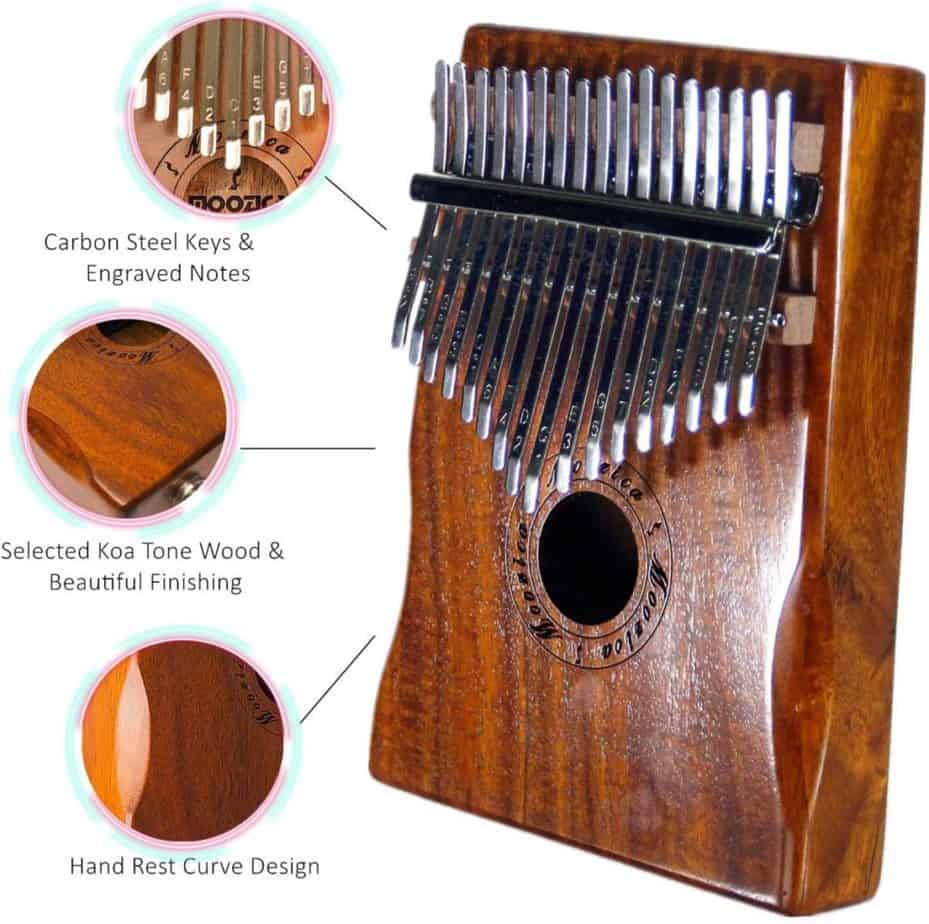
Check the current price on Amazon.
How do you play Kalimba for beginners?
Learning the basics for beginners is just playing around with the Kalimba, simply looking at what each note is called and then playing through them. This will do several things for you, all of which will greatly improve your skills over a short period of time.
You will learn where each note is by muscle memory, letting you read sheet music and not have to wonder what to do or where to place your hands. Your hands will get used to the required movement, letting you know how to hold the Kalimba without fluffing about for several seconds before settling into the right position.
The last advantage that this practice will do is let your muscles build, playing instruments for any amount of time is much more tiring than it looks and having the muscles for it develop early will save a lot of time in the future.
Is it worth learning the Kalimba?
The Kalimba is probably one of the most relaxing instruments you can learn to play. Not only is it soft enough that you can play in an apartment, but you can easily learn songs that relax and destress you even after the busiest of days.
A simple instrument that can produce relaxing music when needed, and it’s a fun skill to have at parties.
Conclusion
Learning to play the Kalimba is an easy way to enter the world of music, letting you learn the basics while teaching you a few tricks along the way. If you want to make a splash it’s a good place to start, or if you just want to do something relaxing at the end of the day, it’s still a fun things to do.
Just be sure to ting properly when the notes on the sheet in front of you call for them!

